




A framework for the sustainable development of South Iceland as a travel destination
1. How does the Destination Management Plan benefit the region?
2. The Destination South Iceland
3. Market analysis and target groups
4. The objective of the Destination Management Plan for South Iceland
5. Priorities of the Destination Management Plan for South Iceland
6. Links to other plans – collaboration and use of the Destination Management Plan
7. Dialogue and collaboration with support organisations
8. Potential and opportunities for South Iceland
9. Key Concepts
10. What can you do?
A destination management plan (DMP) is a holistic strategy with tourism as its starting point. The plan creates a framework for the construction and development of South Iceland as a destination. The aim is to promote responsible tourism through sustainability, which strengthens the economy of communities, improves the quality of life of residents, enhances the experience of tourists, and mitigates the potential negative impact of the tourism industry. It is important that the plan be integrated into other local plans as well as other government programmes. Depending on the nature of the projects, the responsibility for the actions to be undertaken to implement this Destination Management Plan lies with different parties: the government, municipalities, tourism companies, interest groups and other stakeholders.
Preparing a destination management plan involves looking at tourism from a broad perspective with consideration of the many different stakeholders who have an interest in the development of the region. The planning process takes visitors, residents, businesses, and the environment into account and strives to create a balance between these parties. A destination management plan allows residents and the tourism industry to reach an agreement on the type of tourism services they want to offer, the impact it will have on the economy and their community, and what steps to take to achieve these goals.
Much has been accomplished since the first Destination Management Plan for South Iceland was published. Extensive development has taken place, as well as active dialogue and collaboration on various issues. We need to continue to build on this work to establish and promote South Iceland as a destination. Development needs to take the visitor experience into account, with the aim of amending things that need improvement and further improving what's good.

The starting point is always the visitor experience, whether it pertains to accessibility, safety or services, based on quality and professionalism.
The first Destination Management Plan for South Iceland was developed at a time when the region had to respond fast to the rapid increase in foreign tourists (312% increase in 2010-2019) and the challenges that came with it. Due to the Covid-19 pandemic, the situation was very different during the update of the 2020 plan. According to figures from the Icelandic Tourist Board, the number of overseas tourist arrivals decreased by 75.8% between 2019 and 2020, resulting in major challenges. The impact of the epidemic in South Iceland was great as the tourism sector is one of the region’s most important industries all year round. According to the analysis of the tourism industry carried out by the Association of Municipalities in South Iceland (SASS) in 2019, about 18% of jobs in South Iceland were directly related to tourism, not counting derived work. As the pandemic wound down, a new reality in marketing and information supply emerged. Work in attracting visitors to the region again has been successful, but it is likely that some knowledge and experience built up in the preceding years has been lost as a result of the pandemic. This will have an undeniable impact on our priorities in coming years.
The update was carried out in close consultation with stakeholders in the region. Regular meetings were held with representatives of the strategic tourism group of South Iceland municipalities, using data and feedback from participants at the open online meeting held in November 2020, and a survey for different parts of the region was sent out to participating businesses in Visit South Iceland, municipal commissioners and participants in the open meeting. This provided a broad perspective and overview of the state of affairs. The future vision for tourism in South
Iceland, the current situation and the priorities for the years ahead were also reviewed.
The Destination Management Plan is a living document that is subject to change due to external circumstances


The Destination Management Plan for South Iceland supports in various ways the work carried out within municipalities, although its function is not statutory. The plan is based on extensive dialogue and consultation throughout South Iceland, reflecting the will and vision of a diverse group of stakeholders linked to tourism, municipalities and inhabitants.
In formulating the plan, analytical tools were used for more detailed analysis of individual areas and municipalities. The tourism value chain for South Iceland, for example, maps out where value is generated, whether it is inside or outside the region. One function of the value chain is to examine whether there are any underutilised opportunities for the region, whether the value is generated outside the region, and whether it is possible to bring this value inside the region. It also includes a mapping of the support mechanism in place within the tourism industry, directly or indirectly. It is important to maintain this support mechanism and for tourism operators and municipalities to make use of the entities that support the tourism industry.
Accepted analytical methods were used in the development of the Destination Management Plan: GAP analysis can be used to check the current situation, see if anything is missing, and what. SWOT analysis is a simple but useful analytical tool to analyse the situation by listing the strengths, weaknesses, opportunities and threats in the region. The objectives and priorities presented in this summary are based on the results of the above analyses.
South Iceland is a vast region, 30,969 km2 in size, with a population of 31,805 inhabitants. (Statistics Iceland, 2023) South Iceland has 15 municipalities with the largest population centres being Selfoss, followed by the Westman Islands, Hveragerði, Hvolsvöllur, Hella, Þorlákshöfn, Flúðir, Laugarvatn, Reykholt, Eyrarbakki, Stokkseyri, Vík, Kirkjubæjarklaustur and Höfn. South Iceland is a multicultural community where more than 14% of the population are foreign nationals (Institute of Regional Development, 2020). Tourism is one of the cornerstone industries of the region, in addition to which agriculture, fisheries and various services are major pillars of the region’s economy. (SASS, 2020) The Destination Management Plan focuses primarily on South Iceland as a whole, as does the approach to marketing the region as a destination under the slogan “Visit South Iceland” in overseas markets, and “Experience South Iceland” in the Icelandic market. Since there are different challenges and opportunities in different areas within this large part of the country, the region has also been divided in three for the purpose of this work. The main objective is to highlight the strengths of each area and persuade visitors to stay longer, as South Iceland has so much to offer and experience.
This threefold division has become established in relation to tourism, where each area has its own slogan that reflects its unique nature. The areas are:
Golden Circle Area: Árnessýsla, Ásahreppur and Rangárþing ytra have the slogan ENERGY
Katla Geopark & Westman Islands: Rangárþing eystra, Westman Islands, Mýrdalshreppur and Skaftárhreppur have the slogan FORCE
Visit Vatnajökull: The municipality of Hornafjörður has the slogan PURITY.
30,969 km2

Icelandic nationality 86% Foreign nationality 14% The largest population centre is

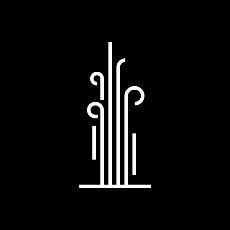


The destination of South Iceland has had the highest Net Promoter Score (NPS) among foreign tourists of the regions measured by the Icelandic Tourist Board, with a score of 4.9 out of 5 in 2022, compared to Iceland's overall NPS of 4.5. The factors that have the highest score with foreign tourists who would recommend Iceland are nature, landscape, beauty, experience, atmosphere, recreation, culture, events, hospitality, locals, and the uniqueness of the country. (Oddný Þóra Óladóttir, 2022) These data suggest that foreign tourists are likely to recommend South Iceland due to the fact that many of Iceland’s biggest natural attractions are located in South Iceland, with good accessibility and short distances between them. Quality and price are well matched, and the marketing is on par with the visitor's expectations when arriving in the region. There is also a long tradition of tourism and receiving visitors in the region, with many established and experienced tourism companies based on a tradition of quality and the hospitality of South Iceland residents.
These are some of South Iceland’s Great Pearls:
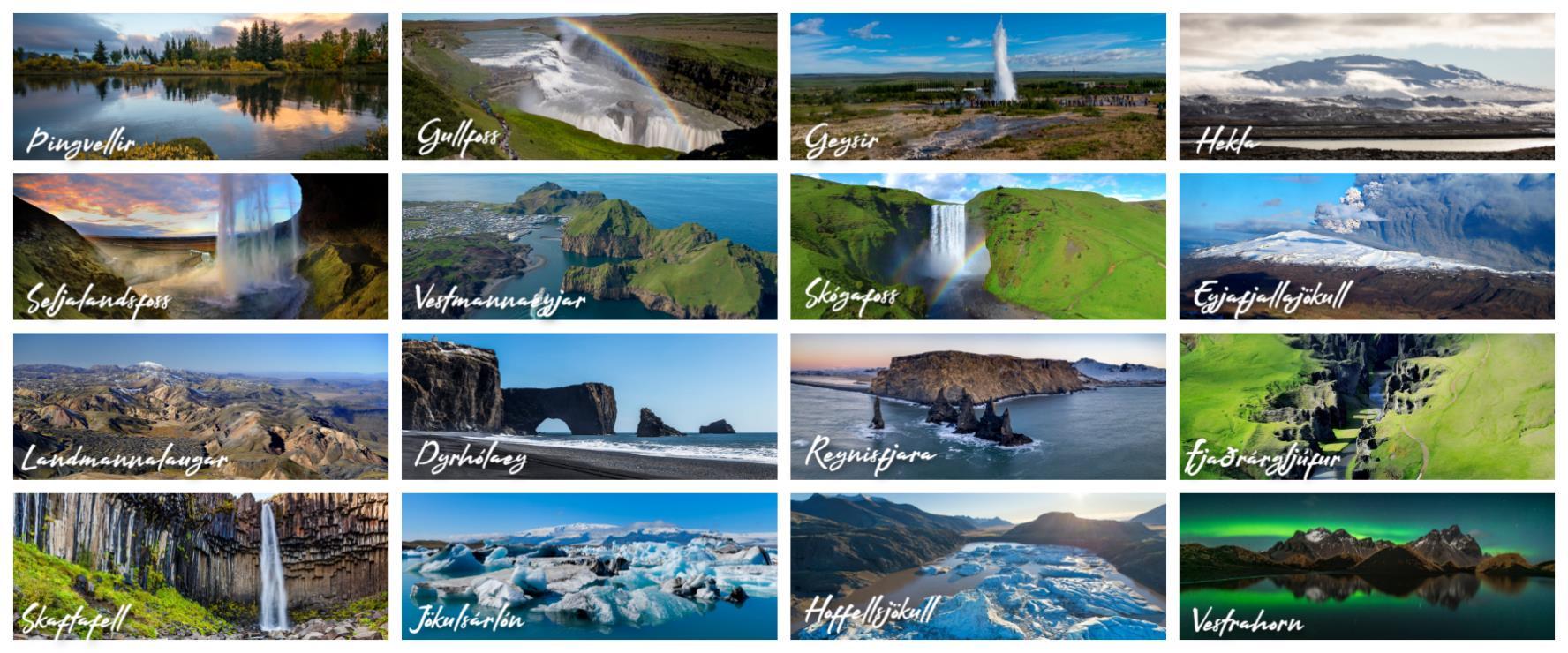
It is important that South Iceland distinguish itself from other parts of Iceland and that tourism managers in South Iceland join forces and foster the region’s uniqueness. This uniqueness is the basis for shaping the marketing strategy and thus the marketing message of the region, which will be delivered to the target audiences.
The market analysis prepared for Visit South Iceland in 2016 presented a marketing strategy for the destination of South Iceland that was distinct from the rest of the country, based on the following factors:
a) Developed and experienced local businesses
b) Diverse nature and attractive natural attractions
c) Good transport and proximity to the capital area and Keflavík Airport
The marketing message of the region needs to reflect these factors and be guided by the positioning of South Iceland. The positioning of the region conveys its uniqueness and the connotations that stakeholders want to create when potential tourists consider South Iceland as a destination. South Iceland captivates the vast majority of foreign visitors who come to Iceland, which is reflected in the market positioning of the region as well as the aforementioned distinction:
“South Iceland has a diverse and spectacular nature with great attractions that are easy to access and experience. The variety and quality of services allow visitors to enjoy the best that Iceland has to offer all year round.”
Included in the positioning are the main elements that distinguish South Iceland, namely the variety of natural attractions, services and activities, and good year-round accessibility. The positioning is a guiding principle in the marketing of the region, highlighting what the destination of South Iceland collectively commits to do for tourists.

There are opportunities in improving quality and fostering dialogue and cooperation within and between areas to further promote tourism in South Iceland. Business Iceland has researched target groups for Icelandic tourism and selected from these studies two promising target groups to attract from key overseas markets. Due to the geographical location of South Iceland, close to the capital and Keflavík Airport, and the fact that most tourists who come to Iceland visit South Iceland, it was decided to focus on these target groups:
Sociable travellers who want to experience authentic culture and nature. Confident and engage in exciting activities but without undue risk. They are likely to travel with their family or partner.
The Independent Explorer
Experienced tourists who travel independently, usually with a partner, and prefer a relaxed travel schedule. They strive to experience something new in their travels and take time to learn about the history and culture of their destination.
These target groups share a common interest in the environment and seek out nature and culture. (Business Iceland, 2022) These values are highly relevant to the future vision for tourism in South Iceland. Further
information on target groups can be found in Promote Iceland’s latest target group analysis.
In addition to the foreign target groups, Icelanders are also a valuable target group for tourism in South Iceland, as evident in the market analysis for the destination that was carried out in 2016. The importance of the Icelandic target group was also highlighted in 2020, when the pandemic hindered international travel. In the summer of 2020, Icelanders travelled much more domestically than in previous years, with the number of nights spent by Icelanders in South Iceland hotels increasing by 423% between July 2019 and July 2020. (Statistics Iceland, 2023)
The future vision for tourism in South Iceland is developed on a common basis with the involvement of major stakeholders in the region and the tourism industry. The vision reflects realistic expectations for the destination and encourages the prioritisation of development and projects that bring the destination closer to its target.
Tourism in South Iceland is sustainable, focusing on holistic development in harmony with nature and society. Tourism is a powerful industry with collaboration between different stakeholders to focus on quality, visitor experience, information supply, education and visitor satisfaction.
When it comes to tourism, protection of nature and cultural heritage is at the forefront, with a focus on securing clear and secure access to key natural attractions.
Regulations on tourism are clear and result in positive experiences for locals and guests.
The road network and transport, by sea, land and air, are safe and conceived holistically, with stopping points that are well thought out with appropriate markings for service and other information.
The opportunities for training in tourism are locally based and diverse.
There are good basic services in the area, and residents have a positive view of tourists and the tourism industry.
The principal objectives of the Destination Management Plan for South Iceland are comprehensive and reflect the future vision for tourism in South Iceland. Each objective is presented here in the form of a brief statement. The objective is reached when the statement has become a reality. Some objectives can be reached through direct action while others are part of a continuous dialogue between the government, tourism industry, community and environmental advocates.
• The transport system is secure.
• Basic services are effective.
• Inhabitants feel the positive impact of tourism.
• A strategy aligned with tourism, community and nature, where development is based on a holistic vision and balance in the community.
• Regulations on tourism are clear and there is active supervision.
• There is an active dialogue and collaboration within the region, and the authorities have a good understanding of tourism.
• The emphasis is on quality tourism in South Iceland, with a focus on good information supply and education to ensure positive experiences and visitor satisfaction.
• The tourism industry in South Iceland always works in harmony with nature, supporting culture and the preservation of cultural heritage.
The principal objectives and future vision reflect sustainability in tourism, in balance between the community, tourism and nature and consistent with 14 of the 17 UN Sustainable Development Goals (SDGs).

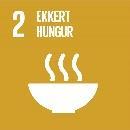


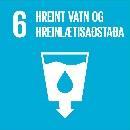
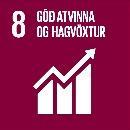
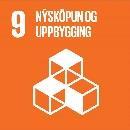


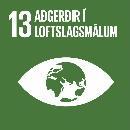

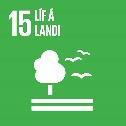
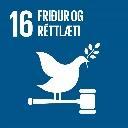

Community - The transport system is secure.
The mutual interests of the community and tourism include a strong and safe transport system, and there are various grounds for these stakeholders to work together as effectively as possible. It is important that the road network, public transport, service and maintenance are in proper order. Much has been done to improve the road network in the region in recent years, including a reduction in the number of single-lane bridges on Highway 1, the introduction of a new Westman Islands ferry, the widening of the Suðurlandsvegur road between Hveragerði and Selfoss, and preparations for a new Ölfusá River Bridge, to name some examples. In addition, several smaller roads have been developed and improved, including in rural parts, in Ölfus and off the Ring Road. All transport-related actions set out in the last destination management plan were also taken into account in the SASS transport plan for 20192029. It is important to continue systematically improving the road network with actual user figures in mind, not least when it comes to maintenance and services. It is important to coordinate and improve the public transport system to and from, as well as within, the region, while considering connections to the country as a whole. The infrastructure must then be prepared to take major steps towards energy transition in transport.
Key performance indicator: The number of road accidents in South Iceland is within tolerance limits.
Monitoring: The number of road accidents in South Iceland (the Icelandic Transport Authority) and the average accident rates in South Iceland and Reykjanes (Tourism Balance Axis).
Community - Basic services are effective.
Effective basic services are one of the key criteria for regional development, as well as a highly important factor for current inhabitants and for attracting new inhabitants and businesses. With many visitors arriving in the area, and in fact acting as temporary inhabitants, there is a greater pressure on the basic services that visitors may need to access. Examples include the health system, law enforcement and access to energy and water. To maintain a diverse economy, regardless of location, telecommunications must be in order, including powerful telephone communications and high-speed internet.
Key performance indicator: The attitude of inhabitants towards basic services in South Iceland is positive. The status of support services is within tolerance limits.
Monitoring: Attitudes of inhabitants towards basic services (Regional Survey) and Status of Support Services (Tourism Balance Axis, forthcoming).
Community - Inhabitants feel the positive impact of tourism.
A robust industry like the tourism industry has a positive impact on the community and can contribute to positive regional development where it is allowed to prosper. Tourism creates jobs, value, and opportunities for inhabitants and thus strengthens the entire community, as noted in SASS’s statistical report on tourism in South Iceland (Tourism in South Iceland in figures and pictures, no date). A strong community is more likely to attract new inhabitants in the area, which in turn further strengthens the community. Tourism provides a solid basis for a wide range of activities, commerce, restaurants and other infrastructure that benefits inhabitants, thus increasing quality of life in the area.
Key performance indicator: Residents' attitudes on the impact of tourism are within tolerance limits.
Monitoring: Attitudes of inhabitants towards tourism (Tourism Balance Axis).
Nature, culture and cultural objects - The tourism industry in South Iceland always works in harmony with nature, supporting culture and the preservation of cultural heritage.
Nature is the main resource for tourism in the region, as most visitors come to the country to explore our magnificent nature. Culture and cultural objects are also an important resource, as many people want to experience the culture of the region. It is important that everyone involved in tourism and the management or organisation of destinations is mindful of nature conservation to avoid irreversible exploitation of resources. Efforts must be made to promote land protection, control traffic flow, increase training, and provide information on conduct in nature and ways to prevent the dangers that are present. It is also important that appropriate infrastructure such as restrooms, waste disposal and parking is available. It is not enough to have a clear regulatory framework, there must also be effective supervision of tourist sites and natural attractions, with visible land protection and law enforcement where appropriate.
Key performance indicator: All infrastructure development for natural attractions and cultural objects must be based on natural and cultural preservation.
Monitoring: a) Mapping of infrastructure development in South Iceland (Visit South Iceland), b) Assessment of the condition of destinations within protected areas (the Environment Agency of Iceland), c) Visitor counts at tourist destinations (the Icelandic Tourist Board, d) Assessment of strain on the environment, infrastructure and society in relation to number of tourists (the Icelandic Tourist Board), e) Condition of infrastructure (Tourism Balance Axis).
Tourism industry - A strategy aligned with tourism, community and nature, where development is based on a holistic vision and balance in the community.
All infrastructure development and policies must continue to be coordinated in line with the community, nature and tourism. This work will continue to take into account initiatives such as the Road Map for Tourism in Iceland, the National Plan for the Development of Infrastructure, the Destination Management Plan, and the Regional Plan of Action for South Iceland. The development of areas/municipalities must be planned in the long term and aimed at both inhabitants and tourists, in harmony with the environment and the community. It is essential that municipalities take advantage of the opportunities provided to them by the South Iceland Destination Management Plan by taking the plan into account in the policy development of individual areas. If any kind of fees for access to individual sites are considered, it is important that the authorities act in a coordinated and centralised manner and ensure a fair division of revenues between regions/municipalities that reflects the need for infrastructure development.
Key performance indicator: The major plans consider tourism, the community and nature, in line with the future vision for tourism in South Iceland.
Monitoring: Analysing gaps, discrepancies, conflicts of interest and disputes in public policies including: the National Plan for the Development of Infrastructure, the Regional Plan of Action for South Iceland, the Road Map for Tourism in Iceland, municipal economic policies and other vital plans at each time.
Tourism industry – Regulations on tourism are clear and there is active supervision.
Work on the previous Destination Management Plan clearly showed the importance of a clear regulatory framework, what is permitted and what is not, not least when it comes to coordinated rules in all areas. One of the topics discussed was the importance of presenting rules and guidelines in a clear manner, both graphically and in several key languages. It is especially important to clarify rules on camping, accommodation, off-road driving and general conduct. Not only must the regulatory framework be clear, but there must also be active supervision. To this end, all existing monitoring mechanisms must be strengthened and supervisors given appropriate authority so tourists and others will take note of them. There must also be effective supervision of development, construction and operators.
Key performance indicators: Everyday inconvenience for inhabitants from tourist activities is within tolerance limits, as is the status of policing and supervision.
Monitoring: Attitudes of inhabitants towards tourism (Tourism Balance Axis), State of policing in South Iceland (Tourism Balance Axis).
Tourism industry - There is an active dialogue and collaboration within the region, and the authorities have a good understanding of tourism.
By regularly updating the Destination Management Plan’s stakeholder analysis, the development of dialogue and collaboration in the region can be monitored. The active dialogue and collaboration taking place in the region must be maintained. It is also important to increase dialogue and collaboration where necessary. The authorities must strive to make decisions in good cooperation with rural areas/regions where appropriate. Criteria often vary between regions and even within the same region. It is important that authorities are aware of, and base their decisions on, the nature of the industry and its importance as one of the pillars of Iceland’s economy.
Key performance indicator: More collaboration and dialogue on tourism in South Iceland.
Monitoring: Stakeholder analysis in the Destination Management Plan for South Iceland. Tourism industry - The emphasis is on quality tourism in South Iceland, with a focus on good information supply and education to ensure positive experiences and visitor satisfaction.
The quality and professionalism of tourism in the region must be maintained and improved even further. It is important that businesses make use of the tools available to support and develop quality in their operations, such as Vörður, Vakinn, Responsible Tourism, the Tourism Skill Centre, educational centres and environmental certifications. Training, education, and information needs to be promoted in the tourism industry, both in the form of shorter courses and comprehensive learning, aimed at ensuring a unique and enjoyable visitor experience. Training must be designed so that those working in the tourism industry can access further education or training in their local community. It is also important to introduce the tourism industry and its opportunities to young people still in school. Consistent and powerful information supply to tourists within the region is important for the relevant part of the country and the tourism industry, for frontline workers and for the local communities. Care must be taken to ensure that markings and signs are properly designed, informative and well located.
Key performance indicator: Visitor satisfaction four South Iceland is measured at 4.7 on a 5-point scale. The Net Promoter Score (NPS) for South Iceland is over 80%.
Monitoring: Visitor satisfaction for South Iceland and Net Promoter Score (the Icelandic Tourist Board)
This chapter discusses the activities that Visit South Iceland can work on to bring the region closer to its objectives in tourism. The actions are related to the main priorities that emerged in the preparation of the Destination Management Plan. The main priorities are:
Development
Quality and professionalism
Safety, access and control
Dialogue and collaboration Reconstruction after Covid-19
Visit South Iceland, Content creation and information supply
The Destination Management Plan for South Iceland
The community and the people
• Work on priorities, projects and follow-up for the Destination Management Plan; Sustainable development, dialogue and collaboration, responsible tourism, safety and access, nature conservation, impact of tourism on communities, management and distribution of tourists, quality and quality issues, information supply, markings and education, investment and innovation, research and statistics and transport issues.
• Introduction and implementation of the Destination Management Plan for South Iceland:
- The plan submitted to municipalities for formal approval.
- The plan submitted for review by support units for tourism in South Iceland
- Publication of an updated plan
- The plan presented to municipalities, tourism operators, other local support units and inhabitants.
- Dialogue and collaboration with municipalities, tourism operators and landowners.
Related to priority: Dialogue and collaboration | Sustainable development.
Related to principal objective: There is an active dialogue and collaboration within the region, and the authorities have a good understanding of tourism.
Related to a priority of the Regional Plan of Action for South Iceland: We want tourism in South Iceland to be based on a sustainable community.
Related to the future vision and emphasis in Icelandic tourism until 2030: Compared to the future vision and emphasis in Icelandic tourism as a whole.
Developer: Visit South Iceland
Sponsor: Municipalities and other support units in the area
Depending on financing: Contract with the Icelandic Tourist Board
The United Nations Sustainable Development Goals:

• Development of procedures following dialogue and collaboration between stakeholders requiring an analysis of the status, needs and priorities in tourism education and training during the year.
• Development of processes and dissemination of the training on offer, focusing on local training providers and facilitating industry access to information on what’s available.
• Participation in educational development projects.
Related to priority: Quality and professionalism.
Related to principal objective: Emphasis on quality tourism in South Iceland, with a focus on good information supply and education.
Related to a priority of the Regional Plan of Action for South Iceland: We want tourism in South Iceland to be based on a sustainable community.
Related to the future vision and emphasis in Icelandic tourism until 2030: Professionalism, quality and safety characterise tourism in Iceland.
Developer: Visit South Iceland
Sponsor: The South Iceland Educational Network, the South Iceland University Association, the Tourism Skill Centre
Depending on financing: Contract with the Icelandic Tourist Board
The United Nations Sustainable Development Goals:

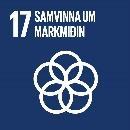
• Development of procedures and framework for regional research through dialogue and collaboration with relevant stakeholders. Develop a needs assessment for research and measurements for the region, the three areas of South Iceland and the country as a whole.
• Regularly compile official statistics and other material useful for the analyses and tasks of Visit Iceland, and share them with stakeholders.
Related to priority: Research and statistics.
Related to principal objective: There is an active dialogue and collaboration within the region, and the authorities have a good understanding of tourism. | A strategy aligned with tourism, community and nature, where development is based on a holistic vision and balance in the community.
Related to a priority of the Regional Plan of Action for South Iceland: We want tourism in South Iceland to be based on a sustainable community.
Related to the future vision and emphasis in Icelandic tourism until 2030: Increased productivity, value creation and competitiveness across the country. - Professionalism, quality and safety characterise tourism in Iceland.
Developer: Visit South Iceland
Sponsor: SASS, SASS advisory group, strategic tourism group of municipalities, Icelandic Tourist Board, Business Iceland and the Icelandic Tourism Research Centre, local researchers.
Depending on financing: Contract with the Icelandic Tourist Board
The United Nations Sustainable Development Goals:


• Dialogue, collaboration and consultancy to municipalities, also related to projects by the Education and Training Service Centre (MSS).
• Participation, oversight and review in municipal tourism-related projects, such as development projects, tourism sections of the land use plans and other programmes, if requested.
• Dialogue, collaboration and consultation with other local entities such as Vatnajökull National Park, Þingvellir National Park, Katla Geopark, the Environment Agency, SASS etc. There is also involvement in tourism-related plans and related projects, if requested.
• Dialogue with tourism companies, inhabitants and other stakeholders, both informally and in formal meetings in the context of MSS projects, including the promotion of positive messages, writing articles and communicating with South Iceland inhabitants on tourism.
Related to priority: Dialogue and collaboration | Sustainable development | Impact of tourism on communities | Management and distribution of tourists | Safety and accessibility.
Related to principal objective: Inhabitants feel the positive impact of tourism | A strategy aligned with tourism, community and nature, where development is based on a holistic vision and balance in the community. | There is an active dialogue and collaboration within the region, and the authorities have a good understanding of tourism.
Related to a priority of the Regional Plan of Action for South Iceland: We want tourism in South Iceland to be based on a sustainable community
Related to the future vision and emphasis in Icelandic tourism until 2030: Positive impact on the local community and quality of life. | Focus on the management and development of destinations and year-round tourism all across the country. | All regions should benefit from tourism. | Nature, culture, and entertainment contribute to a unique visitor experience. | The balance between the utilisation and protection of nature, as well as infrastructure development, should take this into account | Respect for tolerance limits and management of strain on tourist destinations.
Developer: Visit South Iceland
Sponsor: Municipalities in South Iceland, SASS, Vatnajökull National Park, Þingvellir National Park, Katla Geopark, the Environment Agency and other relevant local entities.
Depending on financing: Contract with the Icelandic Tourist Board
The United Nations Sustainable Development Goals:






To work systematically according to a plan such as this, it is important that there is a continuous thread between the plan and other local, national and even international plans.
The region
Local plans include the land use plans of municipalities in the region, the Regional Plan of Action for South Iceland, plans for Vatnajökull National Park, Þingvellir National Park and Katla UNESCO Global Geopark. The Regional Plan for the South Highlands, which is being developed at the time of writing, is also worth mentioning.
The country
It is important for destination management plans to conform to governmental tourism programmes such as Future Vision and Emphasis in Icelandic Tourism until 2030, the National Plan for the Development of Infrastructure for the Protection of Nature and Cultural Heritage and the Tourism Balance Axis. It is also important to refer to the Regional Development Plan when preparing the Destination Management Plan.
The world
Part of Iceland’s implementation of the United Nations Sustainable Development Goals is examining how the Destination Management Plan’s objectives and potential actions are consistent with the Sustainable Development Goals, and thus likely to promote sustainability.

There are several entities in South Iceland that are involved in the tourism industry in some capacity, mostly in managing individual stopping points and destinations. Most of these institutions have their own frameworks for the work they carry out. Active dialogue and collaboration across institutions has a strong synergistic effect, coordinates policies and contributes to greater understanding between different stakeholders. A key factor in this is not only talking to statutory bodies but also independent institutions. The destination of South Iceland benefits greatly from these entities sharing knowledge and information and coordinating their plans.
Entities in South Iceland involved in tourism:
• Vatnajökull National Park
• Þingvellir National Park
• Katla UNESCO Global Geopark
• The Environment Agency of Iceland
• The Cultural Heritage Agency of Iceland
• The Icelandic Forest Service
• The South Iceland Natural History Museum Branch
• The South-East Iceland Natural History Museum Branch
• Visit South Iceland
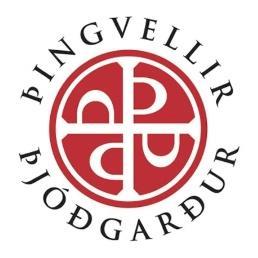
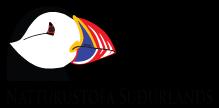


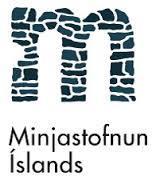

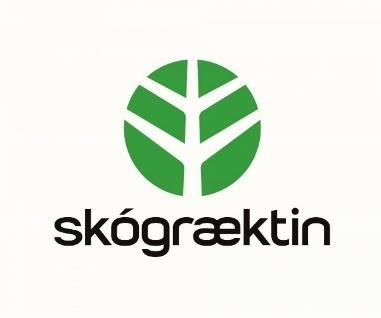


South Iceland has obviously extensive experience and knowledge when it comes to receiving visitors. But there’s always room for improvement, and South Iceland has numerous diverse opportunities to add to the region’s offerings and further enhance the visitor experience.
The food: The culinary riches of South Iceland can be explored much further to promote South Iceland as a food destination.
History and culture: More focus needs to be placed on South Iceland history and culture, both its past and cultural heritage and contemporary arts and culture. South Iceland offers numerous historical and cultural attractions as well as a wide variety of event sites. There is also an opportunity to highlight interesting stories of daily life and folk tales of hidden people and ghosts, and bring these accounts to life. There is an abundance of opportunities.
Travel routes: Although Iceland’s oldest travel route is located in South Iceland, more can be done in this area with a concentrated focus on theme- and location-based travel routes. One major travel route across the South of Iceland, The Volcanic Way, is an ideal project to further explore and link areas in South Iceland with themes of volcanic activity.
More dialogue and collaboration: South Iceland has a great tradition of successful communications and collaborations. This needs to be maintained to facilitate sharing of information between stakeholders, increase cooperation where appropriate, make use of the knowledge available in the region and connect different entities through mutual projects.
Visitor experience: There is great untapped potential in experiential travel for the tourism industry in South Iceland, both for tourism companies and at stopping points/destinations.
Investment and innovation: The foundation for a strong tourism industry is the availability of investment opportunities and continued innovative thinking among inhabitants of South Iceland.
The Destination Management Plan for South Iceland is the basis for Visit South Iceland’s action plan, as well as a useful framework and idea bank that companies, municipalities, landowners and other stakeholders can use in their projects. The Destination Management Plan assists stakeholders in working even harder towards quality, professionalism and responsible tourism, guided by sustainability.
This refers to natural access, as well as what can be done to improve accessibility. This can include roads, paths, parking facilities and steps.
Health services, law enforcement, waste collection and other public services.
A destination management plan (DMP) is a holistic strategy with tourism as its starting point. The aim is to promote responsible tourism, which strengthens the economy of communities, improves the quality of life of residents and mitigates the potential negative impact of the tourism industry.
In the Destination Management Plan for South Iceland, a stopping point refers to a place where travellers rest or stop briefly on their way to a destination. Here, a destination is defined as an important stage of travel or an overnight stay that is part of a continuing journey.
Used in different contexts to refer to, for instance, construction or development of road networks, tourist destinations or population centres, whether on a large or small scale.
An economy in which the needs of consumers are not only met through products and services but also an accompanying positive experience.
A person travelling outside their everyday environment.
Roads, paths, platforms, services, restrooms, garbage bins and anything else applicable at each location.
Innovation is creating or making something new, or developing and improving something that already exists. This includes products, services, technology, methodologies or sales and marketing methods, to name a few examples. Product development describes the overall process required to bring a new product and/or service to market.
Regenerative tourism is tourism with the aim of improving destinations for the benefit of future generations.
Development that meets the demands of our modern age without reducing future generations’ potential to meet their own needs.
A visitor who spends at least one night at the place they visit.
All parties who benefit from or are directly or indirectly involved in the tourism industry.
The road network, public transport, horse riding trails, bicycle routes and hiking trails
For the vision of the Destination Management Plan for South Iceland to be realised, stakeholders must contribute and carry out the actions that pertain to them. Together, South Iceland's tourism stakeholders can achieve the set objectives, and thus the vision for the future.
Municipalities:
Can make use of the Destination Management Plan in their planning work. They can employ a tourism representative, or an equivalent employee, and join Visit South Iceland.
Institutions and support services:
Can make use of destination management plans for different regions, taking care to consult with the regions before making any decisions that may have different effects on different regions.
Tourism companies:
Can make use of ideas contained in destination management plans. These include quality considerations, education and training of staff, and dialogue and collaboration with other tourism companies and inhabitants.
Inhabitants:
Inhabitants can participate by, for example, talking positively about tourism and tourists, thus supporting the industry and showing pride in their region/town. They can also use the services.
us in sustainable tourism development in South Iceland!